
ANTS 2016
Tenth International Conference on Swarm Intelligence
September 7-9, 2016. Brussels, Belgium

September 7-9, 2016. Brussels, Belgium

 Springer LNCS Volume 9882
Springer LNCS Volume 9882 Call for papers in PDF format
Call for papers in PDF format
The ANTS2016 registration fee is 420 EUR.
The conference fee includes:
Coffee breaks and a conference dinner will be offered by the organizing committee.
|
Auditorium R42.4.502 Solvay Brussels School of Economics and Management Campus du Solbosch Université Libre de Bruxelles Av. F.D. Roosevelt 42 1050 Brussels, Belgium. |
|
ANTS 2016 IRIDIA-CoDE, CP 194/6 Université Libre de Bruxelles Av. F. D. Roosevelt 50 1050 Bruxelles, Belgium |
Tel +32-2-6502729 Fax +32-2-6502715 email: ants@iridia.ulb.ac.be |
For accommodation we suggest to book directly at a hotel of your choice or through websites such as booking.com. Unfortunately, there are no hotels that are very close to the university, the closest being at ca. 20 minutes walking distance.
To give an idea of possible hotel locations from which the conference site can easily be reached by the tram 94 line (exit at stop Jeanne), check the map indicating a few hotels in yellow. An alternative is to take a hotel in the center of Brussels and to reach the conference site, for example, by the bus line 71 (exit at stop Jeanne).
This is a list of possible restaurants for lunch breaks.
Avenue de L'université |
|
| Fresh corner (fresh food) | map |
| Exki (healthy / vegetarian) | map |
Corner of Avenue de L'Université and Chaussée de Boondael |
|
| Brasserie La Bastoche (belgian-french) | map |
| La Bécasse (belgian-french) | map |
| Le Pain Quotidien (café) | map |
Chaussée de Boondael |
|
| Mamma Roma (pizza) | map |
| Quick (burgers) | map |
| Seven days (kebab) | map |
| Poussières d'Etoiles (thai) | map |
| Tout près (sandwiches/salad/pizza) | map |
| Sogno d'Italia | map |
| 8:30-16:00 | REGISTRATION | |||||||
| 9:00-9:30 | Welcome | |||||||
| 9:30-10:30 | Invited plenary talk Metaphor-based metaheuristics: who's to blame? Kenneth Sörensen (University of Antwerp) |
|||||||
| 10:30-11:00 | Coffee break | |||||||
| 11:00-12:00 | Session 1: Oral presentations
|
|||||||
| 12:00-14:00 | Free time for lunch | |||||||
| 14:00-15:30 | Session 2: Oral presentations
|
|||||||
| 15:30-15:45 | Session 3: Preview highlights
|
|||||||
| 15:45-17:45 | Poster session 1: Papers and previews presented in Sessions 1, 2, and 3 (coffee served at 16:15) |
| 9:00-10:00 | Invited plenary talk Collective Sensing and Decision-Making in Animal Groups: From Fish Schools to Primate Societies Iain Couzin (Max Planck Institute) |
||||||||||||||||||||||||||
| 10:00-10:30 | Coffee break | ||||||||||||||||||||||||||
| 10:30-12:00 | Session 4: Oral presentations
|
||||||||||||||||||||||||||
| 12:00-13:30 | Free time for lunch | ||||||||||||||||||||||||||
| 13:30-14:30 | Session 5: Oral presentations
|
||||||||||||||||||||||||||
| 14:30-18:30 | Special session: SwarmOrgan FET project
|
||||||||||||||||||||||||||
| 18:30 | Meeting at conference location - We walk to the dinner together | ||||||||||||||||||||||||||
| 19:00 | Conference dinner |
| 9:00-10:00 | Invited plenary talk Aggregate Programming Jacob Beal (BBN Technologies) |
||||||||
| 10:00-10:30 | Coffee break | ||||||||
| 10:30-12:30 | Session 6: Oral presentations
|
||||||||
| 12:30-14:00 | Sandwich lunch at conference site | ||||||||
| 14:00-15:00 | Session 7: Oral presentations
|
||||||||
| 15:00-15:15 | Session 8: Preview highlights
|
||||||||
| 15:15-17:00 | Poster session 2: Papers and previews presented in Sessions 4 to 8 (coffee served at 15:30) | ||||||||
| 17:00-17:15 | Award Ceremony | ||||||||
| 17:15 | Conference conclusion |
Abstract: There is no doubt that early metaphor-based metaheuristics (evolutionary algorithms, simulated annealing, ant colony optimization, ...) have contributed immensely to the arsenal of metaheuristic techniques currently available, as well as to our understanding of metaheuristics as general-purpose optimization frameworks. The last decade, however, has witnessed an explosive increase in the number of processes, natural or man-made, that have been used as a metaphor for the development of supposedly novel metaheuristics. Indeed, a subculture seems to have arisen within the metaheuristics community in which the value of a heuristic is judged solely by the novelty of the process it purportedly models. The result is an enormous jungle of "novel" techniques that neither perform well, nor provide any useful insight. Together with the increasing outlandish nature of these processes, no doubt a result of the exhaustion of the more obvious processes that actually optimize something, comes an increasing awareness that there is something seriously wrong with this way of doing "research". Several journals have now modified their editorial policies to explicitly prohibit "novel" metaphor-based methods and many researchers have spoken out against them. When investigating the reasons why it was the metaheuristics community that fell victim to the metaphor fallacy, and why papers that have no discernible scientific value do get published in this field, we have to conclude that the responsibility lies, at least partially, with the community itself. We make a plea for a "scientification" of the field of metaheuristics, which includes swearing off some of its old habits and customs.
Bio: Kenneth Sörensen is professor at the Faculty of Applied Economics of the University of Antwerp, where he also obtained his PhD. Kenneth Sörensen chairs the research group ANT/OR (University of Antwerp Operations Research Group), a group that focuses on applications of Operations Research in diverse domains, and on the development of optimization algorithms, especially metaheuristics. Kenneth Sörensen has published extensively on applied (heuristic) optimization and is a leading expert on the development of metaheuristics. He also founded the largest working group on metaheuristics: EU/ME - the metaheuristics community.
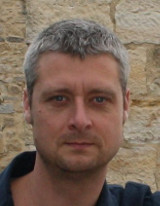
Abstract: Understanding how social influence shapes biological processes is a central challenge in contemporary science, essential for achieving progress in a variety of fields ranging from the organization and evolution of coordinated collective action among cells, or animals, to the dynamics of information exchange in human societies. Using an integrated experimental and theoretical approach I will address how, and why, animals exhibit highly-coordinated collective behavior. I will demonstrate new imaging technology that allows us to reconstruct (automatically) the dynamic, time-varying networks that correspond to the visual cues employed by organisms when making movement decisions. Sensory networks are shown to provide a much more accurate representation of how social influence propagates in groups, and their analysis allows us to identify, for any instant in time, the most socially-influential individuals within groups, and to predict the magnitude of complex behavioral cascades before they actually occur. I will also investigate the coupling between spatial and information dynamics in groups and reveal that emergent problem solving is the predominant mechanism by which mobile groups sense, and respond to complex environmental gradients. Evolutionary modeling demonstrates such ‘physical computation’ readily evolves within populations of selfish organisms, and allowing individuals to compute collectively the spatial distribution of resources and to allocate themselves effectively among distinct, and distant, resource patches, without requiring information about the number, location or size of patches. Finally I will reveal the critical role uninformed, or unbiased, individuals play in effecting fast and democratic consensus decision-making in collectives, and will test these predictions with experiments involving schooling fish and wild baboons.
Bio: Iain Couzin is Director of the Max Planck Institute for Ornithology, Department of Collective Behaviour, and the Chair of Biodiversity and Collective Behaviour at the University of Konstanz, Germany. Previously he was a Full Professor in the Department of Ecology and Evolutionary Biology at Princeton University, and prior to that a Royal Society University Research Fellow in the Department of Zoology, University of Oxford, and a Junior Research Fellow in the Sciences at Balliol College, Oxford. His work aims to reveal the fundamental principles that underlie evolved collective behavior, and consequently his research includes the study of a wide range of biological systems, from insect swarms to fish schools and primate groups. In recognition of his research he has been recipient of the Searle Scholar Award in 2008, top 5 most cited papers of the decade in animal behavior research 1999-2010, the Mohammed Dahleh Award in 2009, Popular Science’s "Brilliant 10” Award in 2010, National Geographic Emerging Explorer Award in 2012 and the Scientific Medal of the Zoological Society of London in 2013.
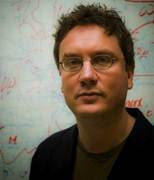
Abstract: We live in a world with an ever-increasing density of computing devices, pervading every aspect of our environment. Programming these devices is challenging, due to their large numbers, potential for frequent and complex network interactions with other nearby devices, and the open and evolving nature of their capabilities and applications. Aggregate programming addresses these challenges by raising the level of abstraction, so that a programmer can operate in terms of collections of interacting devices. In particular, field calculus provides a safe and extensible model for encapsulation, modulation, and composition of services. On this foundation, a set of resilient “building block” operators support development of APIs that can provide resilience and scalability guarantees for any service developed using them. In this talk, the power of this approach will be illustrated by discussion of several recent applications, including crowd safety at mass public events, disaster relief operations, construction of resilient enterprise systems, and network security.
Bio: Dr. Jacob Beal is a scientist at BBN Technologies and a research affiliate of MIT and the University of Iowa. His research interests center on the engineering of robust adaptive systems, with a focus on problems of modeling and control for spatially-distributed systems like sensor networks, robotic swarms, and natural or engineered biological cells. Dr. Beal completed his Ph.D. in 2007 under Prof. Gerald Jay Sussman at the MIT Computer Science and Artificial Intelligence Laboratory.
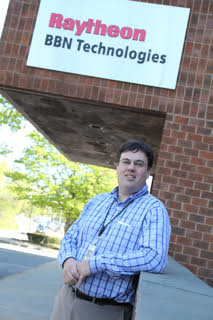
Abstract: Nanoparticles for cancer applications are increasingly able to move, sense, and interact the body in a controlled fashion. The challenge is to discover how trillions of these nanobots can work together to improve the detection and treatment of tumours. Towards this end, the field of swarm robotics offers tools and techniques to control large numbers of agents with limited capabilities. Our swarm strategies are designed in realistic simulators using bio-inspiration, machine learning and crowdsourcing. Strategies are then translated to 1000 kilobots, or to experiments under the microscope in tissue-on-a-chip devices. Lessons learned could also enable large-scale swarm deployments in outdoor applications.
Bio: Sabine Hauert is Assistant Professor in Robotics at the University of Bristol in the UK. Her research focuses in engineering swarms that work in large numbers (>1000), and at small scales (<1 cm). Swarm strategies are either inspired from nature or are automatically discovered using machine learning and crowdsourcing. Before joining the University of Bristol, Sabine engineered swarms of nanoparticles for cancer treatment at MIT as a Human Frontier Science Program Cross-Disciplinary Fellow, and deployed swarms of flying robots at EPFL. Sabine is also the President and Co-founder of Robohub.org, a non-profit dedicated to connecting the robotics community to the public. As an expert in science communication, she is often invited to discuss the future of robotics, including in the journal Nature, at the European Parliament, and as a member of the Royal Society's Working Group on Machine Learning.
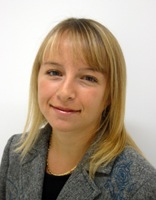
ANTS 2016, continuing a tradition started with ANTS 2002, assigns a "Best paper award".
In addition to a certificate signed by the conference organizers, the award consists of a sculpture of an ant expressly created for ANTS 2016 by the Italian sculptor Matteo Pugliese.
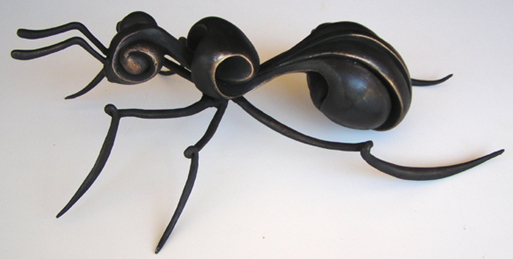
The best paper award has been graciously supported by LNCS Springer.
The winning paper was:
Random walks in swarm robotics: an experiment with Kilobots
Cristina Dimidov, Giuseppe Oriolo and Vito Trianni
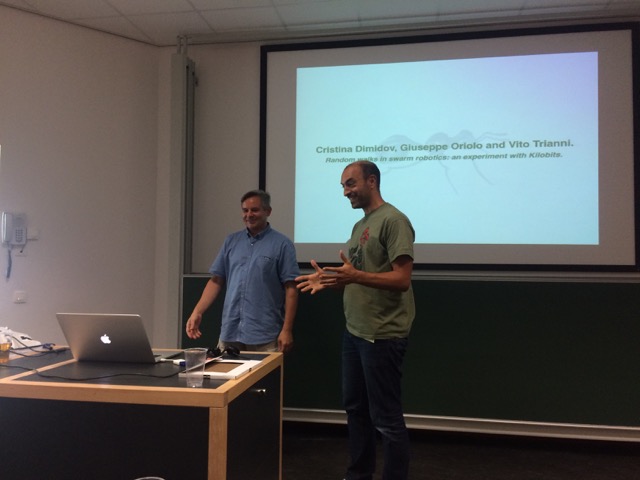
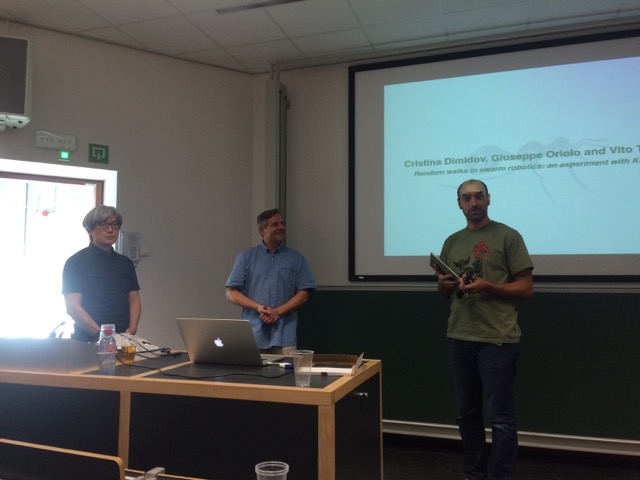
The submission page is here: https://easychair.org/conferences/?conf=ants20160.
Submitted papers must be between 8 and 12 pages long, written in English, typeset in LaTeX, and formatted in the LNCS Springer style. Please download the LNCS package (zip, 219 Kb) for LaTeX and the instruction file (pdf, 160 Kb) directly from the Springer web site. Authors are expected to use the default font and font size of the LNCS LaTeX style. Papers that do not respect these guidelines will be rejected.
Authors are expected to submit their manuscript in PDF format.
All submitted papers will be peer reviewed on the basis of technical quality, relevance, significance, and clarity. If a submission is not accepted as a full length paper, it may still be accepted either as a short paper or as an extended abstract. In such cases the authors will be asked to reduce the length of the submitted paper accordingly. The authors of all accepted papers will be asked to improve their papers on the basis of reviewers' comments.
Authors of the accepted papers are expected to provide the camera-ready copy in PDF format, and all source files—i.e. LaTex file(s), figures and references—needed for obtaining the final version of their paper. Papers that do not comply with all requirements might fail to be included in the conference proceedings.
By submitting a camera-ready paper, the author(s) agree that at least one author will attend and present the paper at the conference.
The submission page is here: https://easychair.org/conferences/?conf=ants20160.
Full-length papers are allotted 12 pages in the proceedings; short papers, 8 pages; and extended abstracts, 2 pages.
The camera-ready version of your paper must be submitted by May 15.
Take into account the comments contained in the reviews of your paper when preparing the camera-ready copy of your contribution.
Only contributions typeset in LaTeX will be included in the ANTS 2016 proceedings. Download the package llncs2e.zip from Springer and format your contribution using the LaTeX class llncs included therein. References must be formatted using the BibTeX style splncs03 which is included in llncs2e.zip, too. References must follow the Number-Only system. Please refer to the class documentation included in the package.
Do not alter in any way the parameters defined by the llncs class. In particular, do not change font family, font size, line spacing, and margin width. Original Springer's class/style files should not be manipulated. Do not include the llncs class among the file you submit. Your paper will be recompiled by Springer using the original llncs class: If you make any modification to this file, the paper will not compile correctly. In this case, your paper will not be included in the proceedings.
Concerning the name of authors given in the latex field \author{}, please provide the full first name and not just the initial. Do not include the academic title, e.g.: Prof. or Dr.
Provide the following information for all authors at the beginning of the contribution: department, faculty, university, company (as applicable), city, country and email address. Do not include street address and ZIP code: This is not supposed to be the full postal address.
To allow you to include this information the llncs class provides the command \institute. To add email addresses, use the command \email within the \institute command. Example:
\institute{SomeLab, University of Somecity, Somecity, Somecountry \email{mymail@somelab.somecity-university.edu}}
After the \institute command please include an \index entry for each of the authors. Example:
\index{Last_name_of_author1, First_name_of_author1}
\index{Last_name_of_author2, First_name_of_author2}
\index{Last_name_of_author3, First_name_of_author3}
For further details, please refer to the documentation of the llncs class.
Acknowledgements, if any, should be given in a final subsubsection at the end of the paper, just before the list of references. Use the following command:
\bigskip
\subsubsection*{Acknowledgments. }
%
Do not provide acknowledgments in a footnote to the title or to the author's name.
Notice that the proceedings will be printed in black and white. Make sure that the figures do not rely on colors to pass a message and they are understandable also when printed in black and white.
A contribution accepted as an extended abstract must not contain an abstract: after the \maketitle command, the body of the paper should start immediately.
By May 15, you must upload the final version of your contribution to the on-line conference system: https://easychair.org/conferences/?conf=ants20160.
In particular, you should upload a compressed archive, either in the zip or tgz format, containing:
The camera-ready copy of your contribution (including references) must not exceed the allotted number of pages. Please notice that contributions that do not comply with all above requirements cannot be included in the ANTS 2016 proceedings.
You must fill in and sign the Springer's copyright form. The form should be emailed to ants@iridia.ulb.ac.be.
Please notice that the copyright form must be at the conference organization offices by May 15, otherwise the contribution cannot be included in the ANTS 2016 proceedings.
Conference proceedings are published by Springer in the LNCS series, Volume 9882.
The journal Swarm Intelligence will publish a special issue dedicated to ANTS 2016 that will contain extended versions of the best research works presented at the conference.